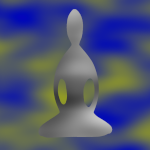Dear Friends,
The third form of wisdom Gil discusses is “decisive wisdom.”
https://www.audiodharma.org/talks/11192
As we sit and practice, there is more clarity in the mind to see what is happening, and we start to see what is helpful and what is not helpful, and the consequences of our actions.
When we see the what is happening and we have a choice: do this or do that, then decisive wisdom can be invoked. If we see there’s a choice that won’t be helpful, to ourselves or to others or both, decisive wisdom can say, “No, I’m not going to do that.” Or if there’s a choice that will be helpful, decisive wisdom can say, “Yes, this is something that I want to do.”
Of course, this sounds pretty simple, but it’s not(at least for me). Sometimes there is a momentum based on years (or maybe generations) of conditioning. And we can see we’re heading in a direction that’s not so great, but we do it anyway. What I’ve found is if I can really feel that tug of momentum, and not look away at the aftermath, and feel the “ouch” that is part of the process, then my system gets more and more attuned to how unskillful this approach is, and the momentum starts to weaken, until one day, it’s gone. (Very much a work in progress!!)
Gil shares an analogy from Mahayana Buddhism of using the sword of wisdom.(See image below of Manjushri with the sword.) When there is clarity, when this is supportive and helpful, we can wield that sword of wisdom decisively. No, I will not do that.
And we can practice wielding that sword effectively:
This is sometimes clearest in our meditation practice. That’s why meditation is such a great laboratory to start seeing and learning about all these forms of wisdom. You’re sitting in meditation, and you realize you’ve had the same thought 500 times, and nothing has really changed, except that the thought is rather mean-spirited towards you. After a while you realize, “Wait a minute. This thought doesn’t have a good impact on me. It’s not healthy, and there’s not much point in repeating this same thought 501 times. Nothing changes. It’s just going around and around.”
At some point, the sword of wisdom comes along, and you say very clearly, “No, enough.” … I think sometimes our mind needs to hear that clear, “No. No more of that kind of thinking.” Probably it will come back. But then we use the sword of ‘No’ again.
Gil also mentions that the way we say “no” to ourselves matters. There’s a way we can channel love and care and safety, somewhat akin to the manner that a loving parent can set boundaries for their children.
Meditation:
When working with distracting thoughts, there’s a list of five strategies one can apply, with the last stage being the decisive “no” that Gil mentions. This guided meditation from Shaila Catherine goes through these five steps (24 minutes):
https://www.dharmaseed.org/talks/70453/
[Shaila recently published a book that examines this five-step process in more detail. It’s called Beyond Distraction: Five Practical Ways to Focus the Mind.]
With good wishes,
Andrea

